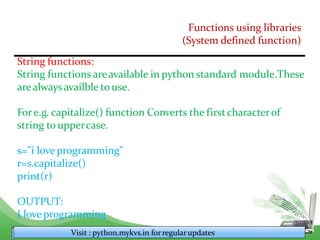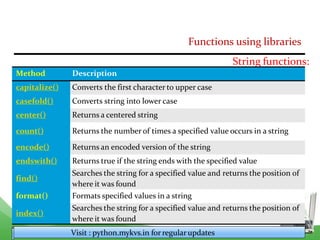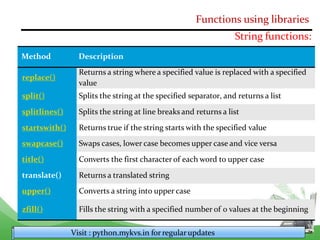This document discusses functions in Python. It begins by defining what a function is and provides examples of built-in functions and functions defined in modules. It then lists some advantages of using functions such as code reusability and readability. The document discusses the different types of functions - built-in functions, functions defined in modules, and user-defined functions. It provides examples of each type. The document also covers topics such as function parameters, return values, variable scope, lambda functions, and using functions from libraries.


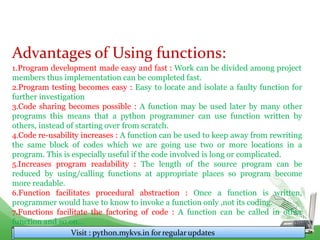

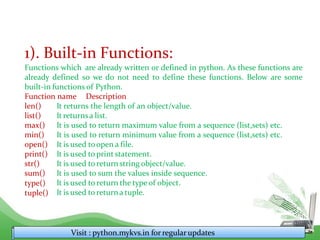

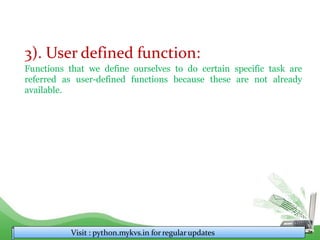
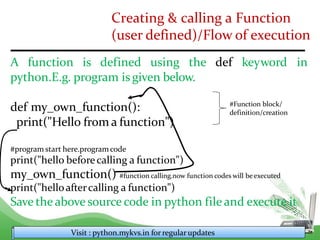
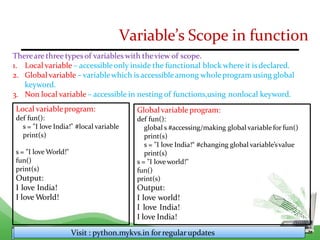


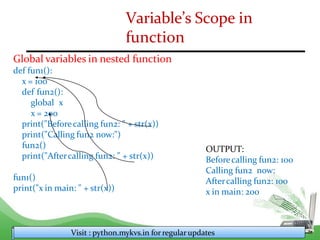
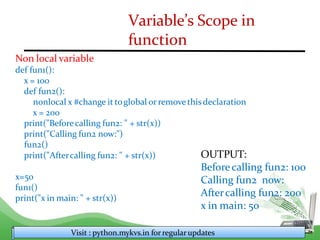
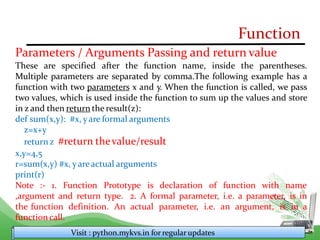
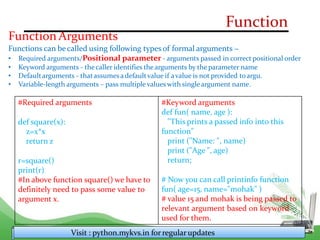



![Mutable/immutable properties
of data objects w/r function
How objectsare passed to Functions
Visit : python.mykvs.in for regularupdates
#Pass by reference
def updateList(list1):
print(id(list1))
list1 += [10]
print(id(list1))
n = [50, 60]
print(id(n))
updateList(n)
print(n)
print(id(n))
OUTPUT
34122928
34122928
34122928
[50, 60, 10]
34122928
#In above function list1 an object is being passed
and its contents are changing because it is mutable
that’s why it is behaving like pass by reference
#Pass byvalue
def updateNumber(n):
print(id(n))
n += 10
print(id(n))
b = 5
print(id(b))
updateNumber(b)
print(b)
print(id(b))
OUTPUT
1691040064
1691040064
1691040224
5
1691040064
#In above function value of variable b is not
being changed because it is immutable that’s
why it is behaving like pass byvalue](https://image.slidesharecdn.com/functions2-230905041328-903a9b82/85/Functions2-pptx-19-320.jpg)


